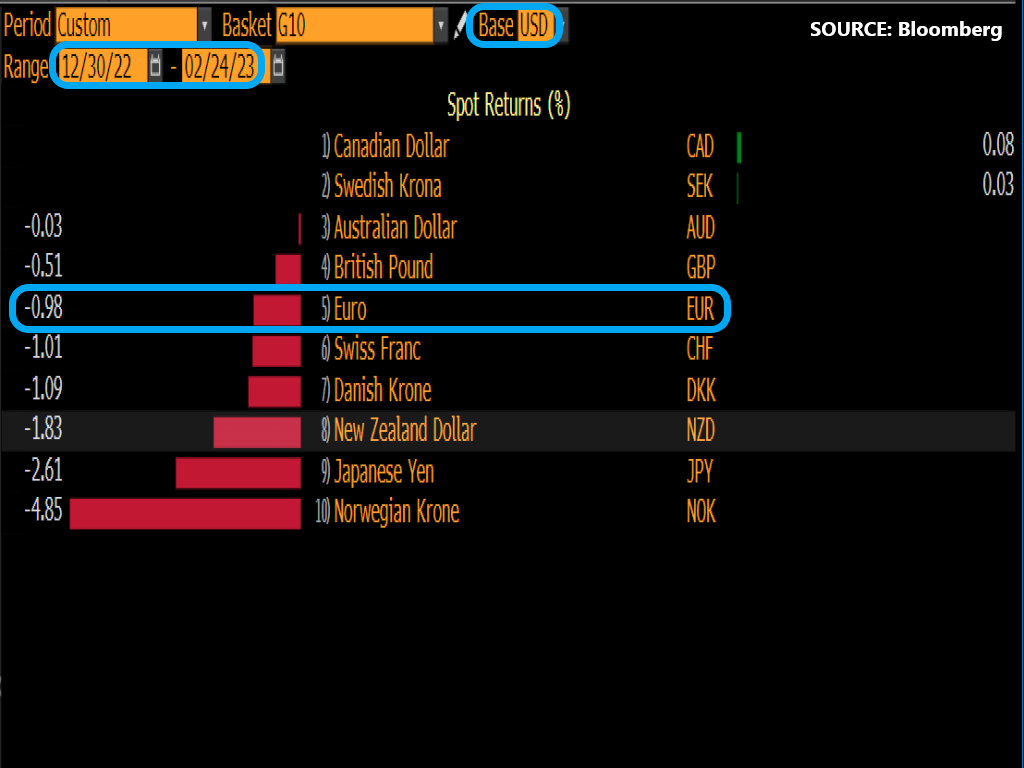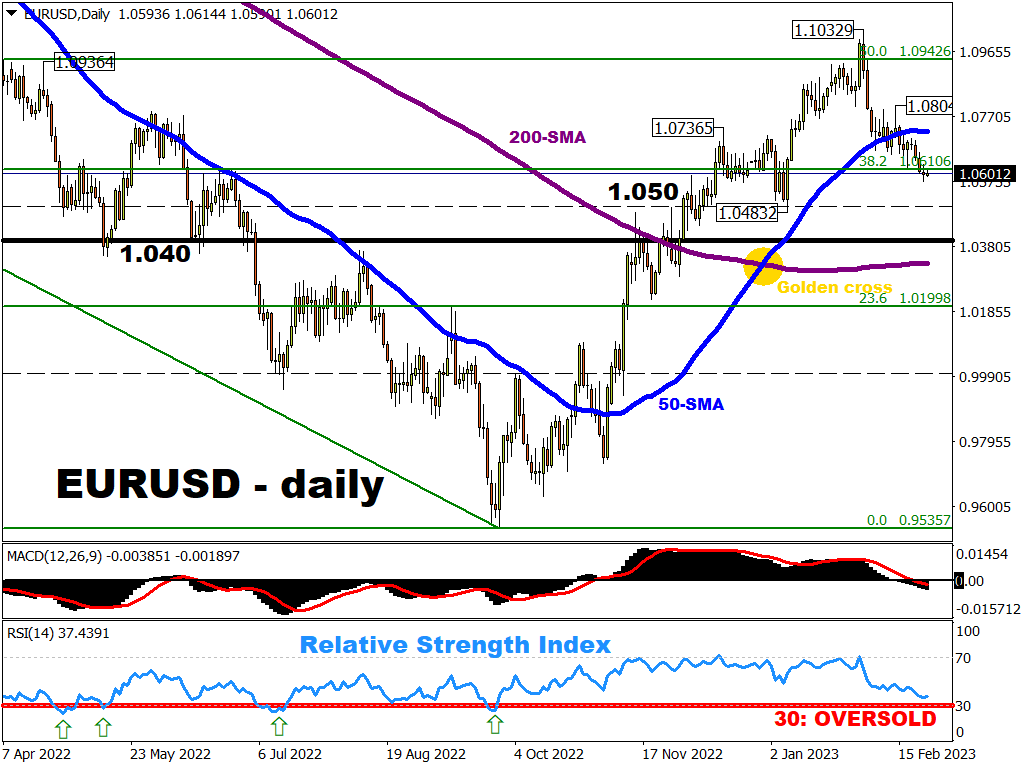As we close out the month and head into the first days of March, here are the scheduled economic data releases and events that could move markets over the coming week:
Monday, February 27
- EUR: Eurozone February economic confidence; ECB Chief Economist Philip Lane speech
- GBP: Bank of England Deputy Governor Ben Broadbent speech
Tuesday, February 28
- JPY: Japan January industrial production, retail sales
- AUD: Australia January retail sales
- CAD: Canada December GDP
- USD: US February consumer confidence; Chicago Fed President Austan Goolsbee speech
Wednesday, March 1
- AUD: Australia 4Q GDP
- CNH: China February PMIs
- EUR: Eurozone February manufacturing PMI (final)
- GBP: UK February manufacturing PMI (final); BOE Governor Andrew Bailey speech
- USD: US February ISM manufacturing
Thursday, March 2
- EUR: Eurozone February CPI, ECB minutes, January unemployment
- GBP: BOE Chief Economist Huw Pill speech
- USD: US weekly jobless claims
Friday, March 3
- JPY: Japan January unemployment; February Tokyo CPI
- CNH: China February services PMI
- EUR: Eurozone January PPI, February services PMI (final)
With month-to-date declines of 2.4%, EURUSD is set to bring the curtains down on a winning run of four consecutive monthly gains (October – January).
Following February’s flop, here are three reasons why Euro bulls will be eager to start off March on the front foot:
Still-elevated Eurozone inflation could strengthen EUR
Recall that central banks around the world have been aggressively raising their respective interest rates to try and cool down inflation.
Since July 2022, the European Central Bank (ECB) has lifted its benchmark rates by a cumulative 300 basis points.
Yet the Eurozone’s January inflation number (as measured by the CPI - consumer price index) came in at 8.6%, which is more than four times the ECB’s 2% target.
The Eurozone’s core CPI (inflation figure that excludes more volatile items such as energy, food, alcohol, and tobacco) still printed at a record high of 5.3% in January!
In other words, the ECB is likely to keep hiking its benchmark rates higher and longer, in order to drag inflation meaningfully lower towards 2%.
And the prospects of higher interest rates tends to translate into currency strength.
Hence, if we are presented with fresh evidence on March 2nd of stubborn Eurozone inflation (say, a number that isn’t noticeably lower than January’s 8.6%), that could help the euro unwind its near-1% of year-to-date declines against the resurgent US dollar.

READ MORE: (September 2022) Why FX markets react to central banks?
Bloomberg model: EURUSD slightly likelier to touch 1.070 than 1.050
From current levels of 1.060 flat at the time of writing, Bloomberg’s FX forecast model points to a 40% chance that we’ll see the world’s most popular FX pair touch 1.070.
Compare that with the slightly lower 36% chance of EURUSD touching 1.05 over the next one-week period.
While both price levels are accorded less-than-even odds, it remains to be seen whether the CPI print or other fundamental factors could trigger such a massive move.
EURUSD may see technical rebound if “oversold” levels reached
This FX pair’s 14-day relative strength index has been careening closer towards the 30 mark, which is the threshold that denotes oversold conditions.
Note how in previous episodes, once the RSI drops below the 30 line, EURUSD then duly bounces back up.
Of course, that means that EURUSD has to fall further in order for its RSI to actually hit the 30 threshold at least, before it can even get a chance of seeing a technical rebound.
And that EURUSD decline may even happen later today (Friday, February 24t ), if the US PCE deflator (the Federal Reserve’s preferred metric for measuring inflation) comes in higher than the market forecasts for a 5% year-on-year advance.
Such an event (higher-than-expected US PCE deflator) later today should translate into more US Dollar strength (i.e. lower EURUSD), and could just pave the way for EURUSD’s technical rebound next week.

Key levels for EURUSD in the week ahead:
SUPPORT
-
1.050 region: psychologically-important area
-
1.04832: January 2023 cycle low
- 1.040 region: psychologically-important line
RESISTANCE
-
50-day simple moving average (SMA)
-
1.07365: mid-December cycle high
- 1.08045: mid-February high
At the time of writing, Bloomberg’s FX model forecasts a 74% chance that EURUSD will trade within the 1.0476 – 1.0729 range, using current levels as a base, over the next one week.